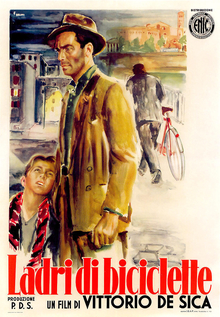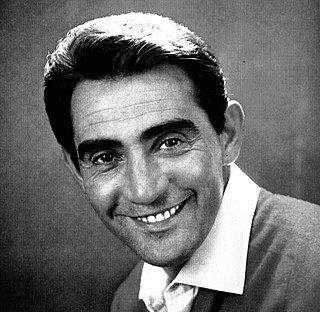Related Research Articles

The cinema of Australia had its beginnings with the 1906 production of The Story of the Kelly Gang, the earliest feature film ever made. Since then, Australian crews have produced many films, a number of which have received international recognition. Many actors and filmmakers started their careers in Australian films, many of whom have acquired international reputations, and a number of whom have found greater financial benefits in careers in larger film-producing centres, such as in the United States.

The Story of the Kelly Gang is a 1906 Australian bushranger film that traces the exploits of 19th-century bushranger and outlaw Ned Kelly and his gang. It was directed by Charles Tait and shot in and around the city of Melbourne. The original cut of this silent film ran for more than an hour with a reel length of about 1,200 metres (4,000 ft), making it the longest narrative film yet seen in the world. It premiered at Melbourne's Athenaeum Hall on 26 December 1906 and was first shown in the United Kingdom in January 1908. A commercial and critical success, it is regarded as the origin point of the bushranging drama, a genre that dominated the early years of Australian film production. Since its release, many other films have been made about the Kelly legend.

Lionel Edmund Rose MBE was an Australian bantamweight boxer, the first Indigenous Australian to win a world title. He later became the first Indigenous Australian to be named Australian of the Year.

Bicycle Thieves is a 1948 Italian neorealist drama film directed by Vittorio De Sica. It follows the story of a poor father searching post-World War II Rome for his stolen bicycle, without which he will lose the job which was to be the salvation of his young family.

William John Hunter was an Australian actor of film, stage and television, who was also prominent as a voice-over artist. He appeared in more than 60 films and won two AFI Awards. He was also a recipient of the Centenary Medal.
Kenneth George Hall, AO, OBE, better known as Ken G. Hall, was an Australian film producer and director, considered one of the most important figures in the history of the Australian film industry. He was the first Australian to win an Academy Award.
Homicide was an Australian television police procedural drama series made by production firm Crawford Productions for the Seven Network. It was the television successor to Crawfords' radio series D24. The "Consummate Homicide cast" includes the four characters that are the best known: Det. Snr. Sgt. David "Mac" MacKay, Det. Sgt. Peter Barnes, Inspector Colin Fox and Sen. Det. Jim Patterson.

Accattone is a 1961 Italian drama film written and directed by Pier Paolo Pasolini. Despite being filmed from an original screenplay, Accattone is often perceived as a cinematic rendition of Pasolini's earlier novels, particularly The Ragazzi and Violent Life. It was Pasolini's first film as director, employing what would later be seen as trademark Pasolini characteristics; a cast of non-professional actors hailing from where the movie is set, and thematic emphasis on impoverished individuals.

Paulus Henrique Benedictus Cox as Paul Cox, was a Dutch-Australian filmmaker, who has been recognized as "Australia's most prolific film auteur".

Walter Annicchiarico, known as Walter Chiari[ˈvalter ˈkjaːri], was an Italian stage and screen actor, mostly in comedy roles.
Film Australia was a company established by the Government of Australia to produce films about Australia in 1973. Its predecessors were the Cinema and Photographic Branch (1913–38), the Australian National Film Board, and the Commonwealth Film Unit (1956–72). Film Australia became Film Australia Limited in 1988 and was consolidated into Screen Australia in 2008.

Backroads is a 1977 Australian film directed by Phillip Noyce. Two strangers – one white (Jack), one Aboriginal (Gary) – steal a car in western New South Wales and drive around the coast. The original characters came from a story by Adelaide writer John Emery, with whom Noyce had worked on a short film. Australian reviews of the film were mixed, and it opened commercially in only one cinema.
Clay is a 1965 Australian drama film directed by Giorgio Mangiamele. The film was nominated for the Golden Palm award at the 1965 Cannes Film Festival, but it lost to The Knack ...and How to Get It.

William Francis Thring, better known as Francis William Thring or F. W. Thring, was an Australian film director, producer, and exhibitor. In 1921 he married Olive, née Kretmayer. Although sometimes known as Frank Thring Sr, on account of well-known son Frank Thring Jr., the Frank Thring who is the subject of this entry is actually Francis William III! His forbears were Francis William Thring - 1812-1887, Francis William Thring - 1858-1920. (F.W. Thring - 1812-1887, actually had two sons both of whom were given their father's name. The first of these was illegitimate, but the second one was born after his marriage, and the Thring line continued through the legitimate son!).
Australian Screen Online (ASO), also known as Australian Screen or australianscreen, is an online database operated by the Australian National Film and Sound Archive (NFSA). It has both a promotional and educational function, providing free worldwide online access to information about Australian cinema and the television industry in Australia.
Il Contratto is a 1953 Australian film from Giorgio Mangiamele and Italian migrants in Australia. It was completed within a year of Mangiamele's arrival in Australia from Italy.
Nigel Buesst is an Australian filmmaker from Melbourne. He ran a photographic school in Carlton until 1970 when he began teaching film at the Swinburne University of Technology. He has been described as "a living legend of Melbourne's film scene" and was a figure in the "Carlton wave" of Australian filmmaking.
Beyond Reason is a 1970 Australian film.
Carlton + Godard = Cinema is a 2003 Australian documentary about the Carlton film scene of the 1960s, including the work of such directors as Giorgio Mangiamele, Brian Davies,. It includes excerpts from films such as:
Raymond Charles Argall is best known as a cinematographer and director for both film and television. He has also worked as an editor. His multi-award-winning feature film Return Home (1990) is regarded by many critics as an Australian cinema classic. Argall served on the Board of the Australian Directors Guild (ADG) for sixteen years, holding the position of president from 2006 to 2015 and secretary from 2015 to 2017. In 2016, Argall launched a business restoring archival films through his production company Piccolo Films. In 2018 the ADG presented him with its prestigious Cecil Holmes Award.
References
- ↑ Graeme Cutts, "Giorgio Mangiamele", Cinema Papers, October 1992 p16-22
- ↑ National Film and Sound Archive: A Portrait of Giorgio Mangiamele by Graham Shirley on australianscreen online
- ↑ National Film and Sound Archive: 'Il Contratto' on australianscreen online
- ↑ National Film and Sound Archive: A Portrait of Giorgio Mangiamele by Graham Shirley on australianscreen online
- ↑ National Film and Sound Archive: 'Ninety Nine Per Cent' on australianscreen online
- ↑ National Film and Sound Archive: 'Clay' on australianscreen online
- ↑ Shirley, Graham (19 June 2011). "Giorgio Mangiamele: Rediscovering the Italian-Australian filmmaker". www.nfsa.gov.au. Retrieved 28 July 2020.
- ↑ "User Report". Ancestry.com . Retrieved 16 December 2019.